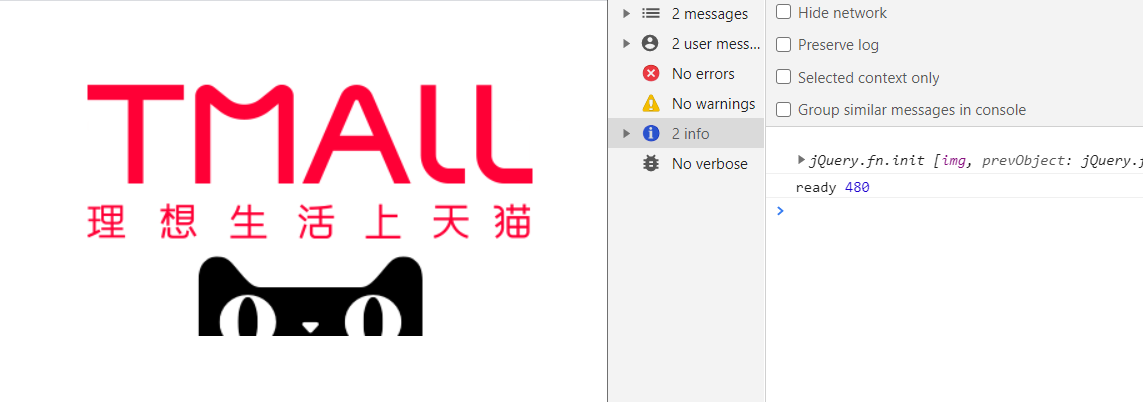jQuery入口函数详解(JavaScript基础)
【辰兮要努力】:hello你好我是辰兮,很高兴你能来阅读,昵称是希望自己能不断精进,向着优秀程序员前行!
博客来源于项目以及编程中遇到的问题总结,偶尔会有读书分享,我会陆续更新Java前端、后台、数据库、项目案例等相关知识点总结,感谢你的阅读和关注,希望我的博客能帮助到更多的人,分享获取新知,大家一起进步!
吾等采石之人,应怀大教堂之心,愿你们奔赴在各自的热爱中…
一、基础入门
最近一段时间会陆续整理前端相关的基础知识,分享给初学者,也供自己学习,感兴趣的可以参考:JavaScript前端专栏

先简单的学习一下原生的JavaScript方法获取我们dom元素以及执行相关方法
window.onload的意思是:事件会在页面加载完成后触发
// 1.原生JS的固定写法
window.onload = function (ev) {
alert("HelloWorld -- 原生JS的固定写法");
}
- 1
- 2
- 3
- 4
jQuery中采用如下的方式代替上述的方法
// 2.jQuery的固定写法
$(document).ready(function () {
alert("HelloWorld --jQuery的固定写法");
});
- 1
- 2
- 3
- 4
代码案例
<!DOCTYPE html>
<html lang="en">
<head>
<meta charset="UTF-8">
<title>jQuery-HelloWorld</title>
<script src="js/jquery-1.12.4.js"></script>
<script>
// 1.原生JS的固定写法
window.onload = function (ev) {
alert("HelloWorld -- 原生JS的固定写法");
}
// 2.jQuery的固定写法
$(document).ready(function () {
alert("HelloWorld --jQuery的固定写法");
});
</script>
</head>
<body>
</body>
</html>
- 1
- 2
- 3
- 4
- 5
- 6
- 7
- 8
- 9
- 10
- 11
- 12
- 13
- 14
- 15
- 16
- 17
- 18
- 19
- 20
- 21
- 22
如果把两个写一起的话,代码如上,弹框出来的顺序是如下


原生的JS入口函数可以拿到DOM元素,然后获取对应的宽高
<!DOCTYPE html>
<html lang="en">
<head>
<meta charset="UTF-8">
<title>jQuery和JS入口函数的区别</title>
<script src="js/jquery-1.12.4.js"></script>
<script>
window.onload = function (ev) {
// 1.通过原生的JS入口函数可以拿到DOM元素
var images = document.getElementsByTagName("img")[0];
console.log(images);
// 2.通过原生的JS入口函数可以拿到DOM元素的宽高
var width = window.getComputedStyle(images).width;
console.log("onload-width", width);
var height = window.getComputedStyle(images).height;
console.log("onload-height", height);
}
</script>
</head>
<body>
<img src="https://img.alicdn.com/tfs/TB1MaLKRXXXXXaWXFXXXXXXXXXX-480-260.png" alt="">
</body>
</html>
- 1
- 2
- 3
- 4
- 5
- 6
- 7
- 8
- 9
- 10
- 11
- 12
- 13
- 14
- 15
- 16
- 17
- 18
- 19
- 20
- 21
- 22
- 23
- 24
控制台输出如下

getComputedStyle() 用法
getComputedStyle是一个可以获取当前元素所有最终使用的CSS属性值。
返回的是一个CSS样式声明对象([object CSSStyleDeclaration]),只读。
二、函数使用
现在我们来学习jQuery如何进行上述操作的
jQuery函数获取DOM元素,拿到DOM元素的宽高
<!DOCTYPE html>
<html lang="en">
<head>
<meta charset="UTF-8">
<title>jQuery和JS入口函数的区别</title>
<script src="js/jquery-1.12.4.js"></script>
<script>
/*
* 1.原生JS和jQuery入口函数的加载模式不同
* 原生JS会等到DOM元素加载完毕,并且图片也加载完毕才会执行
* jQuery会等到DOM元素加载完毕,但不会等到图片也加载完毕就会执行
* */
$(document).ready(function () {
// 1.通过jQuery入口函数可以拿到DOM元素
var $images = $("img");
console.log($images);
// 2.通过jQuery入口函数不可以拿到DOM元素的宽高
var $width = $images.width();
console.log("ready", $width);
});
</script>
</head>
<body>
<img src="https://img.alicdn.com/tfs/TB1MaLKRXXXXXaWXFXXXXXXXXXX-480-260.png" alt="">
</body>
</html>
- 1
- 2
- 3
- 4
- 5
- 6
- 7
- 8
- 9
- 10
- 11
- 12
- 13
- 14
- 15
- 16
- 17
- 18
- 19
- 20
- 21
- 22
- 23
- 24
- 25
- 26
- 27
- 28
- 29
拓展:使用jQuery返回是一个jQuery对象

jQuery和JS入口函数的区别
<!DOCTYPE html>
<html lang="en">
<head>
<meta charset="UTF-8">
<title>jQuery和JS入口函数的区别</title>
<script src="js/jquery-1.12.4.js"></script>
<script>
/*
1.原生的JS如果编写了多个入口函数,后面编写的会覆盖前面编写的
2.jQuery中编写多个入口函数,后面的不会覆盖前面的
*/
window.onload = function (ev) {
alert("hello test1");
}
window.onload = function (ev) {
alert("hello test2");
}
//先测试上面原生的js,然后测试如下的
// $(document).ready(function () {
// alert("hello jQuery1");
// });
// $(document).ready(function () {
// alert("hello jQuery2");
// });
</script>
</head>
<body>
<img src="https://img.alicdn.com/tfs/TB1MaLKRXXXXXaWXFXXXXXXXXXX-480-260.png" alt="">
</body>
</html>
- 1
- 2
- 3
- 4
- 5
- 6
- 7
- 8
- 9
- 10
- 11
- 12
- 13
- 14
- 15
- 16
- 17
- 18
- 19
- 20
- 21
- 22
- 23
- 24
- 25
- 26
- 27
- 28
- 29
- 30
- 31
- 32
如果仅仅使用上面原生的JS如果编写了多个入口函数,后面编写的会覆盖前面编写的,就只弹出test2
window.onload = function (ev) {
alert("hello test1");
}
window.onload = function (ev) {
alert("hello test2");
}
- 1
- 2
- 3
- 4
- 5
- 6
弹框如下

$(document).ready(function () {
alert("hello jQuery1");
});
$(document).ready(function () {
alert("hello jQuery2");
});
- 1
- 2
- 3
- 4
- 5
- 6
jQuery中编写多个入口函数,后面的不会覆盖前面的
实践案例如下,会按顺序弹出


小结
1、原生的JS如果编写了多个入口函数,后面编写的会覆盖前面编写的
2、jQuery中编写多个入口函数,后面的不会覆盖前面的
jQuery入口函数的其它写法
<!DOCTYPE html>
<html lang="en">
<head>
<meta charset="UTF-8">
<title>jQuery入口函数的其它写法</title>
<script src="js/jquery-1.12.4.js"></script>
<script>
// 1.第一种写法
$(document).ready(function () {
// alert("hello world");
});
// 2.第二种写法
jQuery(document).ready(function () {
// alert("hello world");
});
// 3.第三种写法(推荐)
$(function () {
// alert("hello world");
});
// 4.第四种写法
jQuery(function () {
alert("hello world");
});
</script>
</head>
<body>
</body>
</html>
- 1
- 2
- 3
- 4
- 5
- 6
- 7
- 8
- 9
- 10
- 11
- 12
- 13
- 14
- 15
- 16
- 17
- 18
- 19
- 20
- 21
- 22
- 23
- 24
- 25
- 26
- 27
- 28
- 29
- 30
- 31
- 32
页面显示效果

这里我们推荐使用第三种方式!
非常感谢你阅读到这里,如果这篇文章对你有帮助,希望能留下你的点赞👍 关注❤️ 分享👥 留言💬thanks!!!
2021年3月7日22:14:39 愿你们奔赴在自己的热爱里!
文章来源: blessing.blog.csdn.net,作者:辰兮要努力,版权归原作者所有,如需转载,请联系作者。
原文链接:blessing.blog.csdn.net/article/details/114501059
- 点赞
- 收藏
- 关注作者



评论(0)